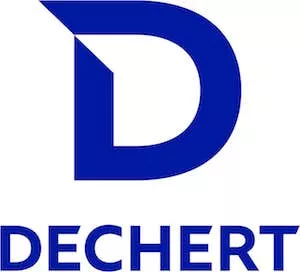- within Technology topic(s)
- in United States
- within Technology topic(s)
- in United States
- with readers working within the Retail & Leisure industries
- within Consumer Protection and Antitrust/Competition Law topic(s)
Key Takeaways
- Passed with broad bipartisan support, the GENIUS Act establishes a comprehensive regulatory framework for "payment stablecoins," a type of digital asset that is designed to maintain a stable value. A core feature of a payment stablecoin is its primary use case: a means of payment or settlement rather than investment.
- Payment stablecoin issuers will be prohibited from paying any form of interest or yield to stablecoin holders and will be required to maintain identifiable reserves backing their outstanding stablecoins on at least a 1:1 basis. The Act also imposes bank-like prudential regulatory and consumer protection standards.
- The Act clarifies that payment stablecoins are neither "securities" nor "commodities" for purposes of the U.S. federal securities and commodities laws and that a "permitted payment stablecoin issuer" is not an "investment company" for purposes of the Investment Company Act of 1940.
- The GENIUS Act is expected to accelerate the growth of stablecoins and adoption of blockchain-based payment systems in the United States and across borders. The Act may also encourage more industry initiatives to incorporate blockchain technology into the wider financial services industry.
- While the Act could create potential competitive pressures within certain segments of the financial services industry, the Act is expected to create opportunities, including for asset managers that seek to manage stablecoin reserve assets.
- Fund managers may also benefit because the GENIUS Act permits a payment stablecoin issuer to maintain its reserves in a registered government money market fund that invests solely in the type of eligible reserve assets enumerated in the Act.
Introduction
Despite significant growth in the stablecoin market over the last five years, stablecoins and stablecoin issuers have generally operated outside of an overarching regulatory framework in the United States. During this time, U.S. policymakers have debated the merits and risks of stablecoins and their proper regulatory framework.1 The Guiding and Establishing National Innovation for U.S. Stablecoins Act (GENIUS Act or Act), which was signed into law on July 18, 2025, with broad bipartisan support, is intended to address a perceived regulatory gap for stablecoins.2 The Act partly addresses President Trump's promise to make the United States the "crypto capital of the world" and follows a number of significant executive, legislative and regulatory developments impacting U.S. crypto regulation and policy since the beginning of 2025, including the recent policy recommendations from the President's Working Group on Digital Asset Markets and the recent announcement of "Project Crypto" from the Securities and Exchange Commission (SEC).3
The GENIUS Act establishes a comprehensive regulatory framework for "payment stablecoins," a type of stablecoin to be used as a means of payment or settlement. Payment stablecoin issuers will generally be limited to: (1) certain U.S. qualified persons subject to federal or, for certain issuers, state supervision; or (2) certain non-U.S. qualified persons registered with the Office of the Comptroller of the Currency (OCC) and subject to a comparable regulatory and supervisory regime (as determined by the Treasury Secretary). Among other provisions, the Act imposes licensing requirements on issuers and subjects them to bank-like prudential regulatory and consumer protection standards that are designed to promote transparency into reserve assets and mitigate a variety of perceived risks. Importantly, payment stablecoins will not include so-called "algorithmic" stablecoins, and payment stablecoin issuers will be prohibited from paying any form of interest or yield to stablecoin holders.
The GENIUS Act will take effect on the earlier of: (1) January 18, 2027 (18 months after the enactment of the Act); or (2) 120 days following the issuance of final regulations implementing the Act (see Appendix A for a timeline of selected key dates).
In this Dechert OnPoint, we provide a brief overview of the stablecoin market and discuss the key features of the GENIUS Act and implications for asset managers.
About Stablecoins
Generally, a stablecoin is a type of digital asset designed to maintain a stable value relative to a reference asset, such as U.S. dollars (USD) or another fiat currency. In contrast to central bank digital currencies (CBDCs), stablecoins are issued by private companies using blockchain technology (typically public blockchains). Most stablecoins are pegged to USD, including the two most widely used stablecoins in circulation. Some stablecoin issuers maintain a stable value (or maintain their "peg" to USD) by backing their stablecoins through assets held in reserves (typically, although not exclusively, in U.S. Treasury securities).4 This mechanism enables stablecoin holders to redeem their stablecoins for USD (or other reference asset) on demand. Other stablecoin issuers may use mechanisms other than reserves to maintain a stable value, such as algorithms that increase or decrease stablecoin supply in response to demand (so-called "algorithmic" stablecoins).5
Globally, stablecoins are estimated to have a current market capitalization in excess of $250 billion, increasing from less than $5 billion in early 2020. Stablecoins often act as a bridge between traditional currency markets and digital assets, and may, among other things, be used to reduce the friction associated with buying and selling digital assets for fiat currency. For example, the most heavily-traded pairs on major centralized crypto exchanges involve stablecoins.6 More recently, stablecoins have been used for cross-border payments and remittances, resulting in reduced settlement times and cost.7
The GENIUS Act
What Are Payment Stablecoins?
The GENIUS Act generally defines a "payment stablecoin" as any digital asset8 that is, or is designed to be, used as a means of payment or settlement, and whose issuer:
- is obligated to convert, redeem or repurchase it for a fixed amount of monetary value; and
- represents that it will maintain, or create the reasonable expectation that it will maintain, a stable value relative to a fixed amount of monetary value.
A "payment stablecoin" would not include a digital asset that is:
- a national currency (e.g., CBDCs);
- a deposit (as defined in the Federal Deposit Insurance Act, including a deposit recorded using distributed ledger technology (so-called "tokenized" deposits));
- a security (as defined in the Securities Act of 1933, the Securities Exchange Act of 1934 or the Investment Company Act of 1940 (1940 Act)); or
- convertible, redeemable or repurchasable for a digital asset denominated in a fixed amount of monetary value (e.g., a stablecoin that is redeemable for or convertible to another stablecoin or digital asset).
A core feature of a payment stablecoin is its primary use case: a means of payment or settlement rather than investment. To this point, the Act prohibits "permitted payment stablecoin issuers" (PPSIs) and registered non-U.S. qualified issuers from paying the holders of their stablecoins any form of interest or yield (whether in cash, tokens or other consideration) solely in connection with the holding, use or retention of such payment stablecoin. The merits of this prohibition have been the subject of significant ongoing debate. Proponents defend it as a reasonable prohibition that seeks to differentiate payment stablecoins from yield-bearing banking and investment products, whereas opponents argue that it does not go far enough. For instance, segments within the banking community believe that the prohibition should be extended to cover affiliates of payment stablecoin issuers, exchanges and others because of current and anticipated arrangements that may enable the indirect payment of interest or rewards to stablecoin holders.9
The Act also clarifies that payment stablecoins are neither "securities"10 nor "commodities" for purposes of the U.S. federal securities and commodities laws and that a PPSI is not an "investment company" for purposes of the 1940 Act. Accordingly, payment stablecoins are not subject to direct oversight by the SEC or Commodity Futures Trading Commission (CFTC).
Who Can Issue, Offer, or Sell Payment Stablecoins in the United States?
The GENIUS Act generally prohibits:
- any person from issuing a payment stablecoin in the United States unless that person is a PPSI or a registered non-U.S. qualified issuer; and
- beginning in 2028,11 any digital asset intermediary, exchange or custodian (a "digital asset service provider" (DASP)) from offering or selling a payment stablecoin to a person in the United States, unless the payment stablecoin is issued by a PPSI or a registered non-U.S. qualified issuer.12
Payment stablecoin issuers will generally be limited to: (1) certain U.S. qualified persons subject to federal or, for certain issuers, state supervision; or (2) certain non-U.S. qualified persons registered with the OCC and subject to a comparable regulatory and supervisory regime (as determined by the Treasury Secretary) and other requirements (discussed below).
Generally, a PPSI is "a person formed in the United States" that is:
- a subsidiary of an insured depository institution (approved by the applicable federal regulator);
- an OCC-chartered uninsured national bank, a federal branch of a non-U.S. bank or a non-bank entity13 (in each case, approved by the OCC); or
- a state bank or non-bank entity operating in a state with a regulatory regime that is "substantially similar" to the GENIUS Act and with $10 billion or less in outstanding payment stablecoins that is not an OCC-chartered uninsured national bank, a federal branch of a non-U.S. bank, an insured depository institution or a subsidiary thereof (approved by the applicable state regulator).
An entity must first apply to and receive approval from its applicable federal or state regulator to become a PPSI.
How Can Non-U.S. Persons Issue Payment Stablecoins in the United States?
The GENIUS Act creates a framework for certain non-U.S. qualified persons to issue payment stablecoins in the United States. This framework is intended to create parity with PPSIs. Under this framework, a non-U.S. person may issue payment stablecoins in the United States if the non-U.S. person:
- registers with and is approved by the OCC;
- is domiciled and regulated in a non-U.S. jurisdiction that is not subject to comprehensive U.S. economic sanctions and not a jurisdiction of primary money laundering concern;
- is subject to a regulatory and supervisory regime "comparable" to the GENIUS Act (as determined by the Treasury Secretary)14;
- can demonstrate that it can comply with certain U.S. "lawful orders"; and
- holds its reserves in U.S. financial institutions "sufficient to meet liquidity demands" from U.S. stablecoin holders.15
An approved non-U.S. qualified issuer will be subject to reporting, supervision and examination requirements (as determined by the OCC) and must consent to U.S. jurisdiction relating to enforcement of the GENIUS Act. The Treasury Secretary may also establish certain reciprocal arrangements or other bilateral agreements with comparable jurisdictions.
What Are the Ongoing Requirements for Permitted Payment Stablecoin Issuers?
Reserve Requirements – PPSIs are required to maintain reserves backing their outstanding payment stablecoins on at least a 1:1 basis. Reserves must be limited to USD and other high-quality assets, including:
- demand deposits;
- U.S. Treasury bills, notes or bonds issued with a stated maturity of 93 days or less, or that have a remaining maturity of 93 days or less;
- overnight reverse repurchase agreements (with the PPSI acting as the purchaser of securities) that are collateralized by U.S. Treasury notes, bills, or bonds, "subject to overcollateralization in line with standard market terms"; and
To view the full article, click here.
Footnotes
1. See e.g., President's Working Group on Financial Markets Issues Report on Stablecoins, Dechert OnPoint (Nov. 23, 2021).
2. At times, this Dechert OnPoint tracks the Act without the use of quotation marks.
3. See Strengthening American Leadership in Digital Financial Technology, President's Working Group on Digital Asset Markets (July 2025); American Leadership in the Digital Finance Revolution, SEC Chairman Paul S. Atkins (July 31, 2025); see also Banking Regulators Address Crypto Custody; Implications for Asset Managers, Dechert OnPoint (July 24, 2025); SEC Approves In-Kind Creations and Redemptions for Crypto Asset ETPs, Dechert OnPoint (Aug. 12, 2025).
4. One company that provides stablecoin analytics estimated that, if stablecoin issuers were considered a single nation, they would be the 14th largest holder of sovereign U.S. debt. See Stablecoin Payments from the Ground Up, Artemis Analytics (May 2025).
5. In 2022, one large algorithmic stablecoin that was pegged to USD collapsed. See Not So Stable: Stablecoin Volatility Causing Turmoil in Crypto Markets, Dechert OnPoint (May 25, 2022).
7. See generally The Stable Door Opens: How Tokenized Cash Enables Next-Gen Payments, McKinsey & Company (July 2025) ("Stablecoins are transforming payments globally, and tailwinds may cause a material shift across the payments industry in 2025 for which incumbents and disruptors alike must make urgent preparations.").
8. The Act defines a digital asset as "any digital representation of value that is recorded on a cryptographically secured distributed ledger."
9. See Closing the Payment of Interest Loophole for Stablecoins, Bank Policy Institute (Aug. 12, 2025) ("The GENIUS Act contained a prohibition on stablecoin issuers offering interest or yield, as well as other financial and non-financial rewards, to holders of stablecoins. However, without an explicit prohibition applying to exchanges, which act as a distribution channel for stablecoin issuers or business affiliates, the requirements in the GENIUS Act can be easily evaded and undermined by allowing payment of interest indirectly to holders of stablecoins. These arrangements ... will undermine the GENIUS Act's prohibition regarding payment of interest and yield. The result will be greater deposit flight risk, especially in times of stress, that will undermine credit creation throughout the economy. The corresponding reduction in credit supply means higher interest rates, fewer loans, and increased costs for Main Street businesses and households.").
10. Earlier this year, the SEC's Division of Corporation Finance issued a statement clarifying that certain 1:1 USD-backed stablecoins do not constitute securities under the U.S. federal securities law. Consistent with the GENIUS Act, this statement did not apply to algorithmic or yield-bearing stablecoins. See SEC Staff Issues Statement on Stablecoins, Dechert OnPoint (April 9, 2025).
11. This prohibition begins three years after the enactment of the GENIUS Act.
12. A DASP includes a person that, for compensation or profit, engages in the following businesses in the United States: (1) exchanging digital assets for monetary value or other digital assets; (2) transferring digital assets to a third party; or (3) acting as a digital asset custodian or otherwise participating in financial services related to digital asset issuance.
13. Non-bank entities that are non-financial services public companies are ineligible to issue payment stablecoins unless explicitly authorized to do so under a dedicated framework, as discussed below.
14. The Treasury Secretary may only make this determination upon a recommendation from each other member of a newly established committee (the Stablecoin Certification Review Committee), and prior to making this determination, the Treasury Secretary must publish the justification in the Federal Register.
15. Under Section 3(g) of the GENIUS Act, only payment stablecoins issued by PPSI can be: (1) treated as cash or as a cash equivalent for accounting purposes; (2) eligible as cash or as a cash equivalent margin and collateral for futures commission merchants, derivative clearing organizations, broker-dealers, registered clearing agencies and swap dealers; or (3) acceptable as a settlement asset to facilitate wholesale payments between banking organizations or by a payment infrastructure to facilitate exchange and settlement among banking organizations. It is unclear whether the Treasury Secretary has the authority to change this treatment when authorizing non-U.S. qualified persons to issue payment stablecoins in the United States.
The content of this article is intended to provide a general guide to the subject matter. Specialist advice should be sought about your specific circumstances.











